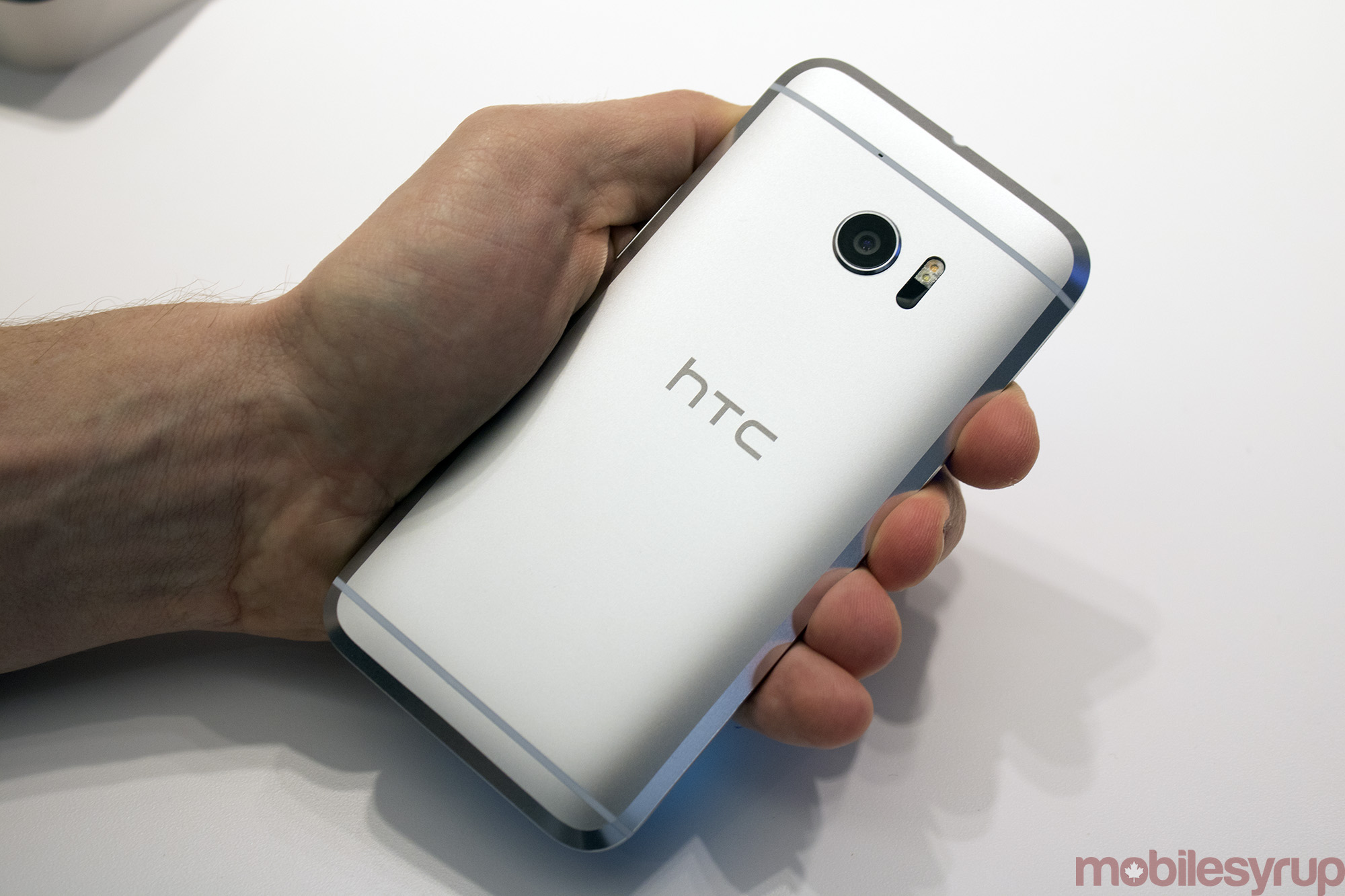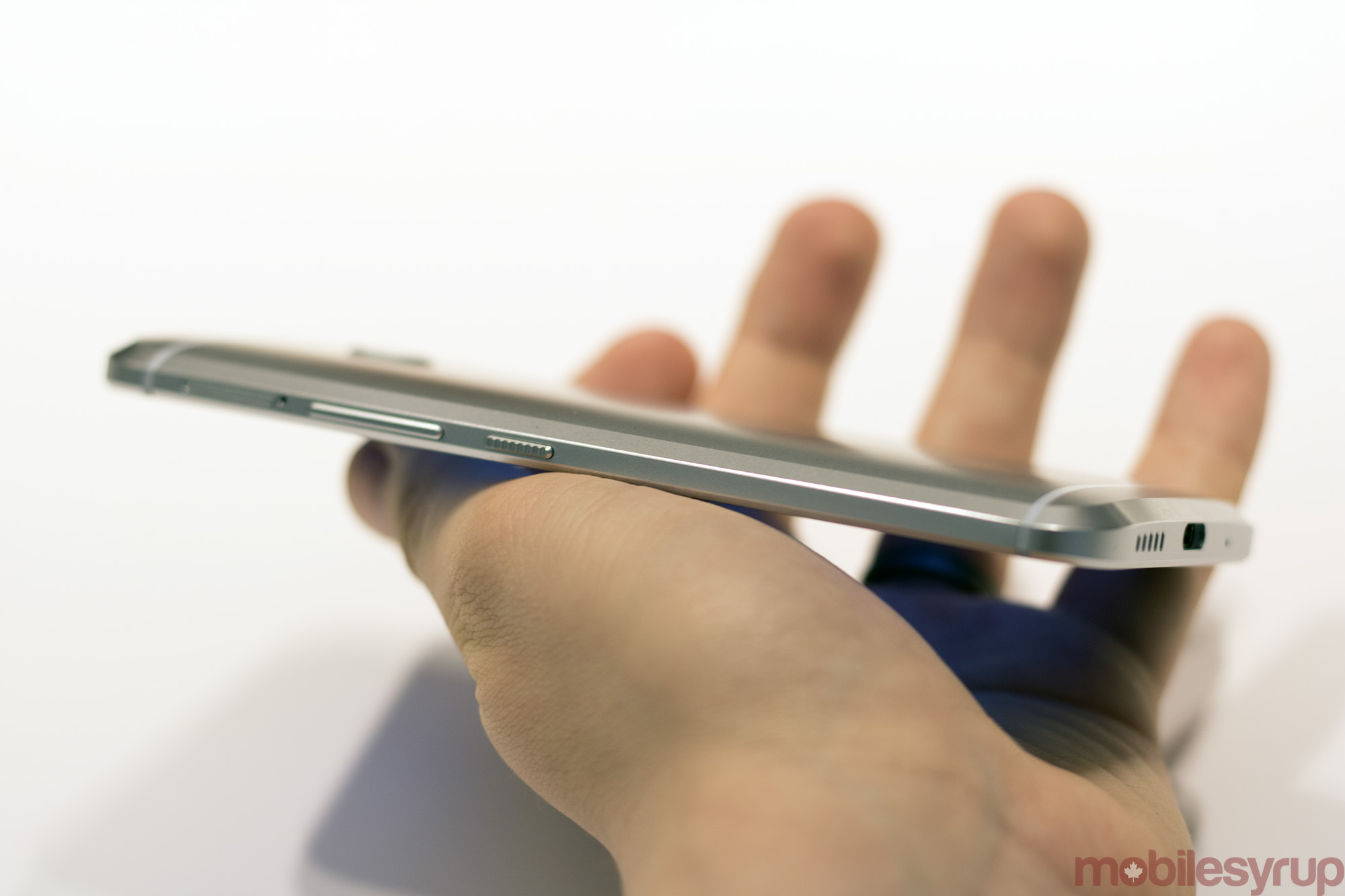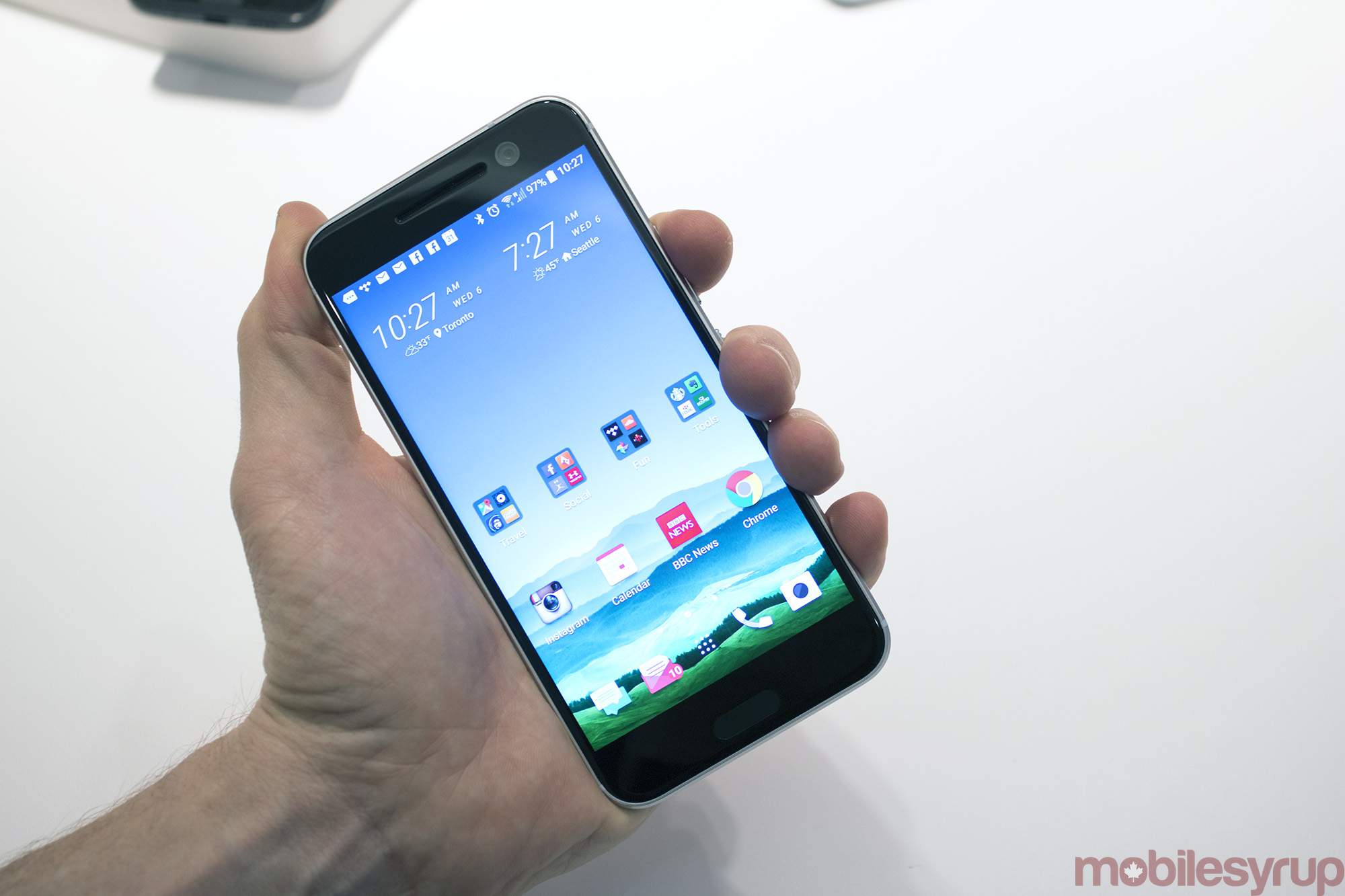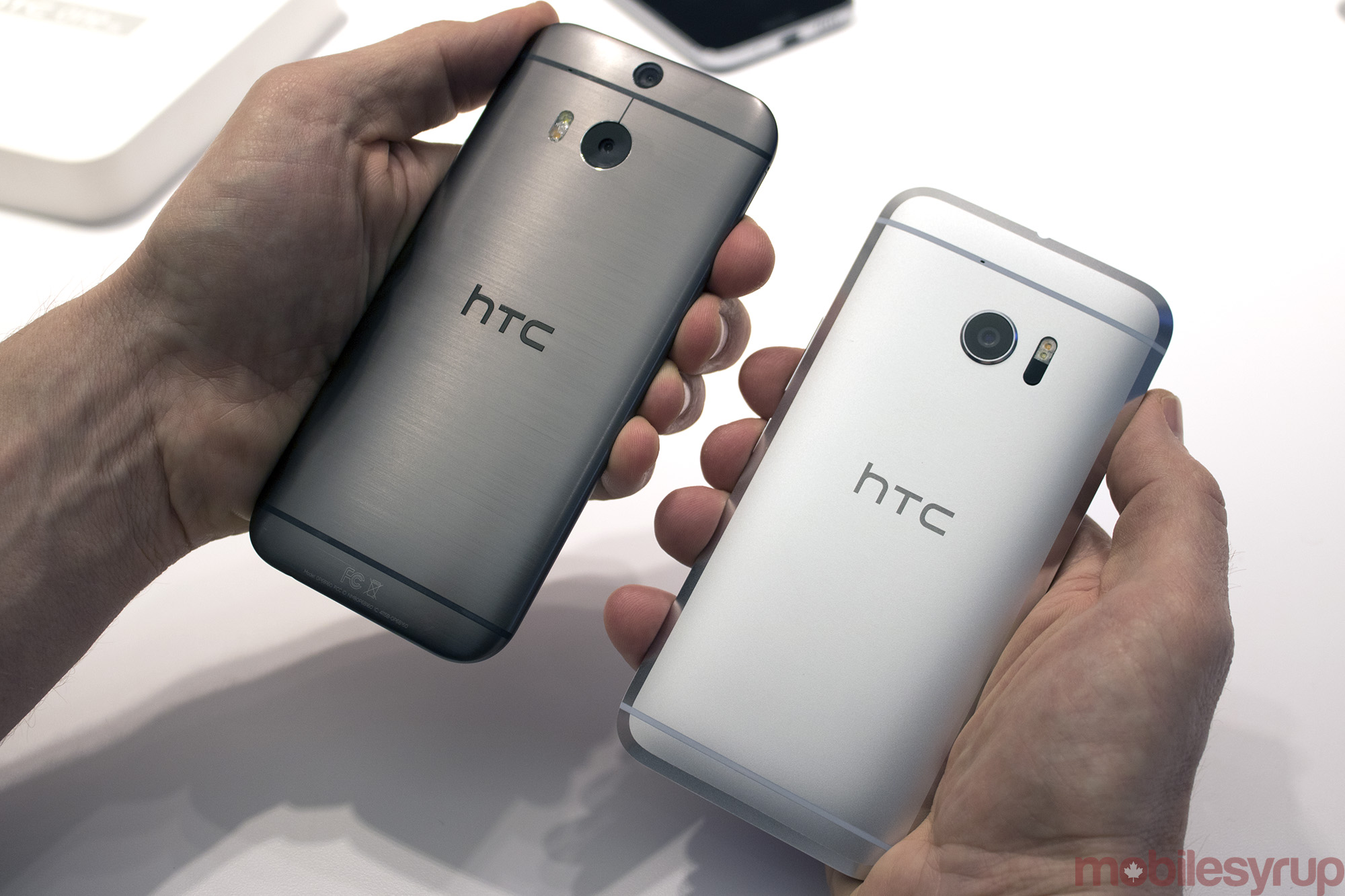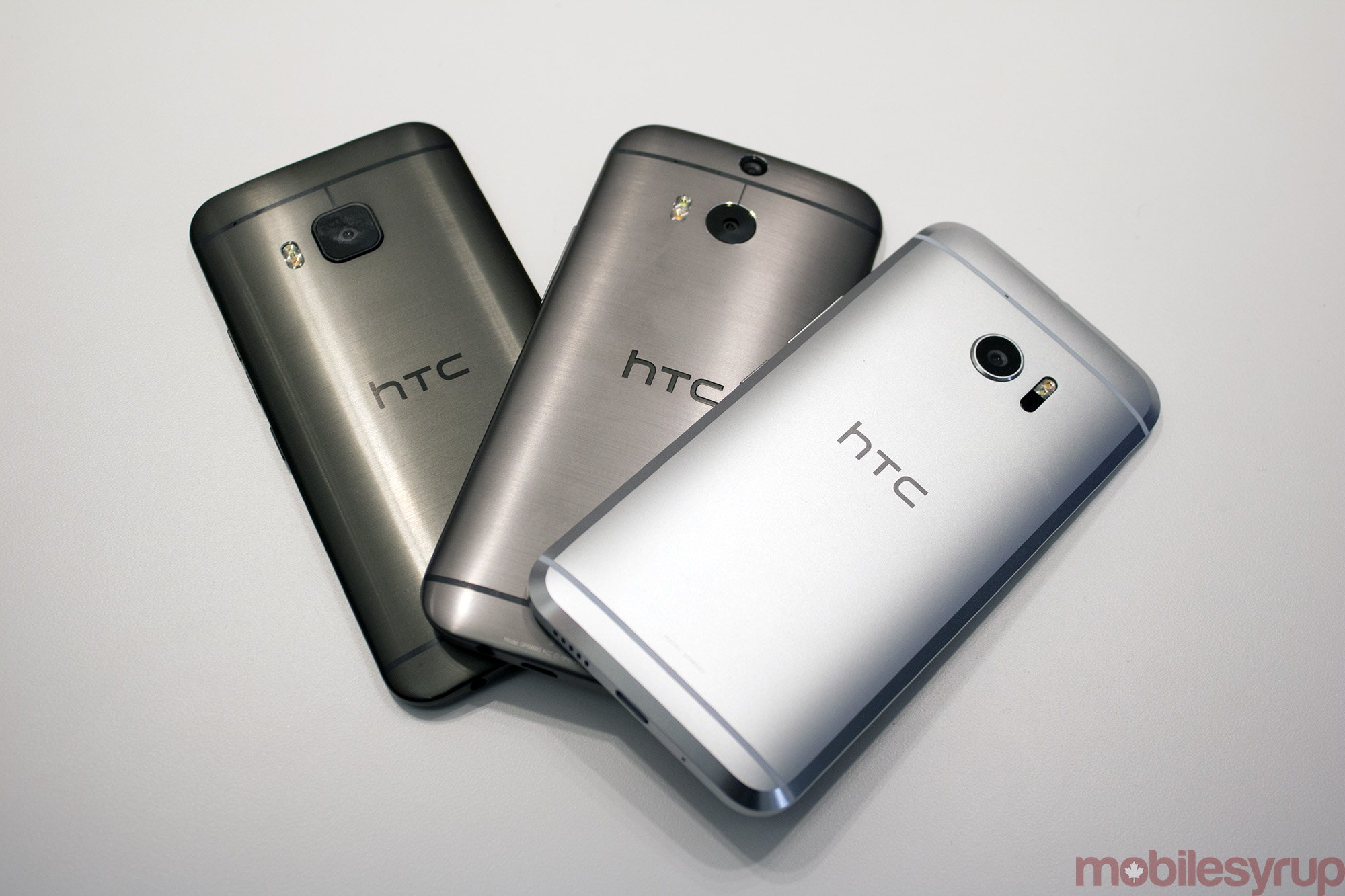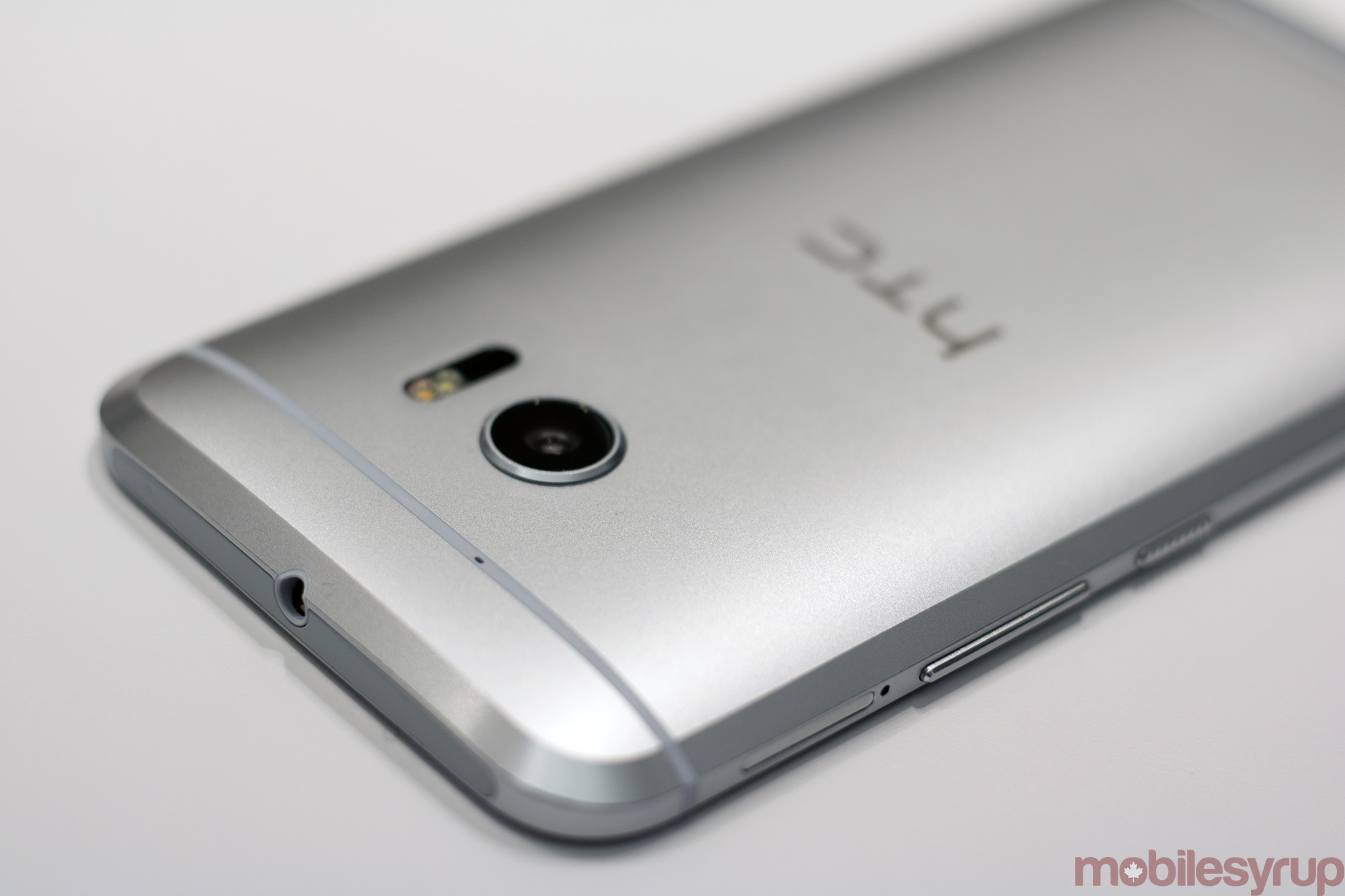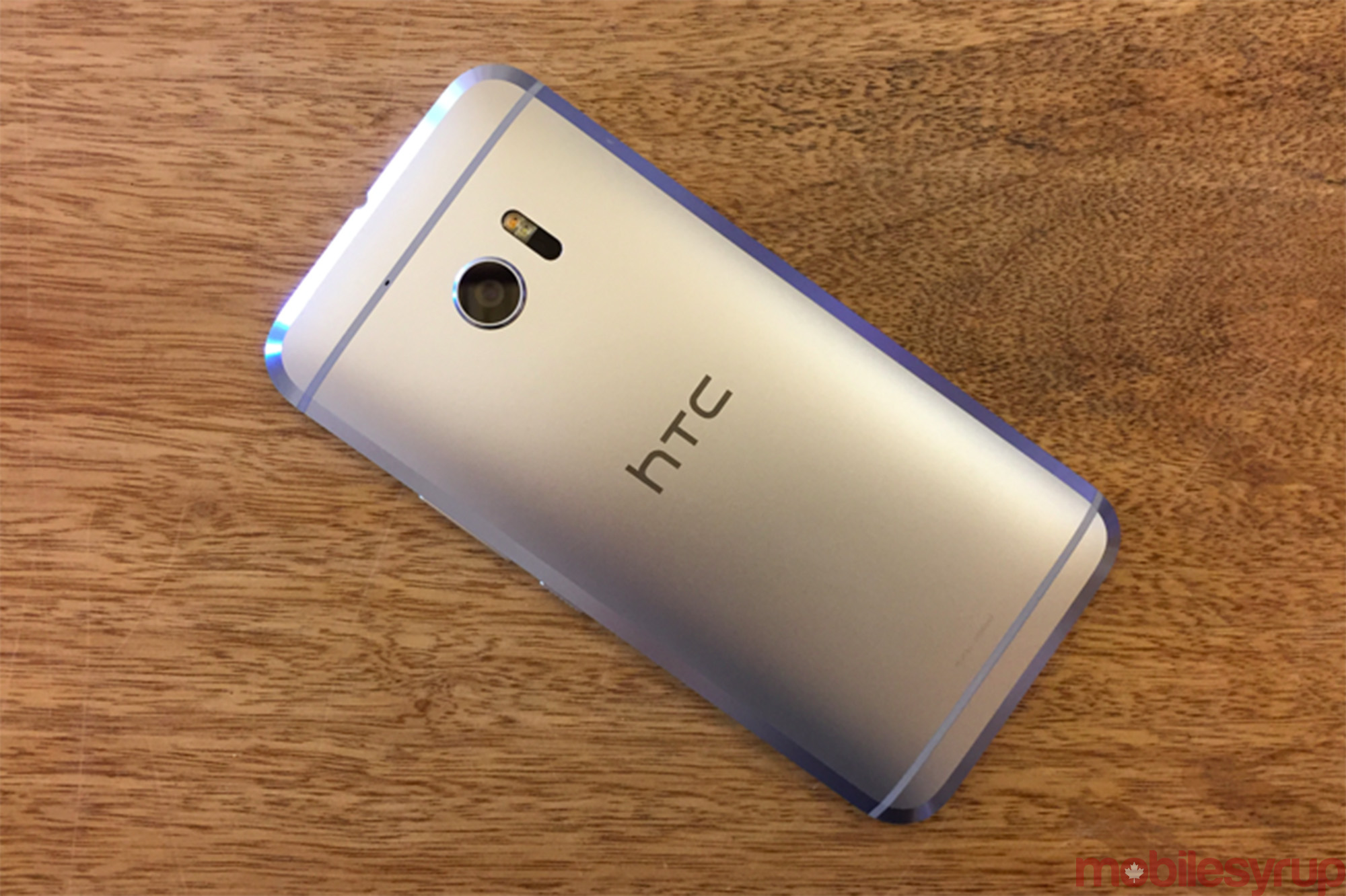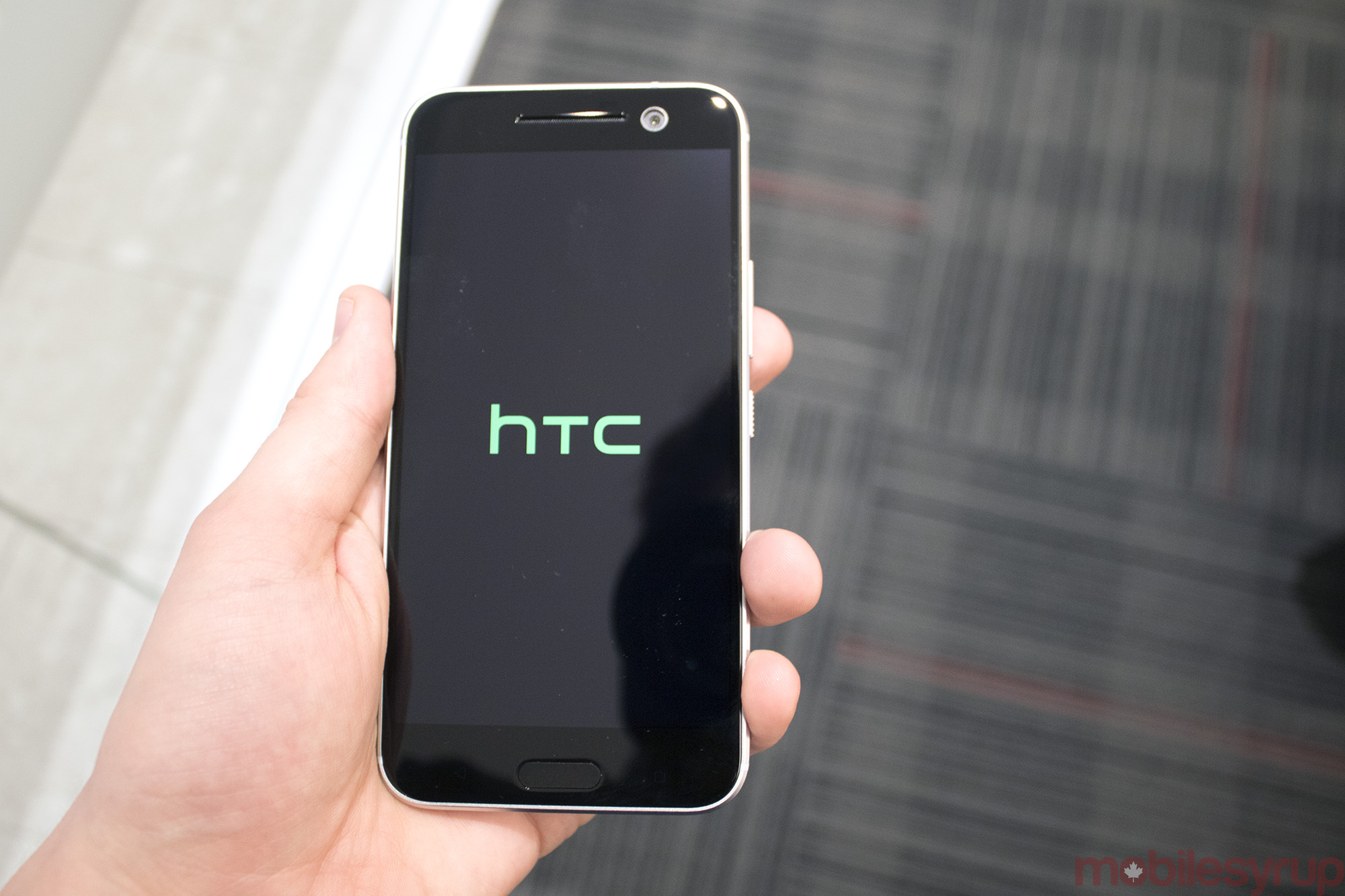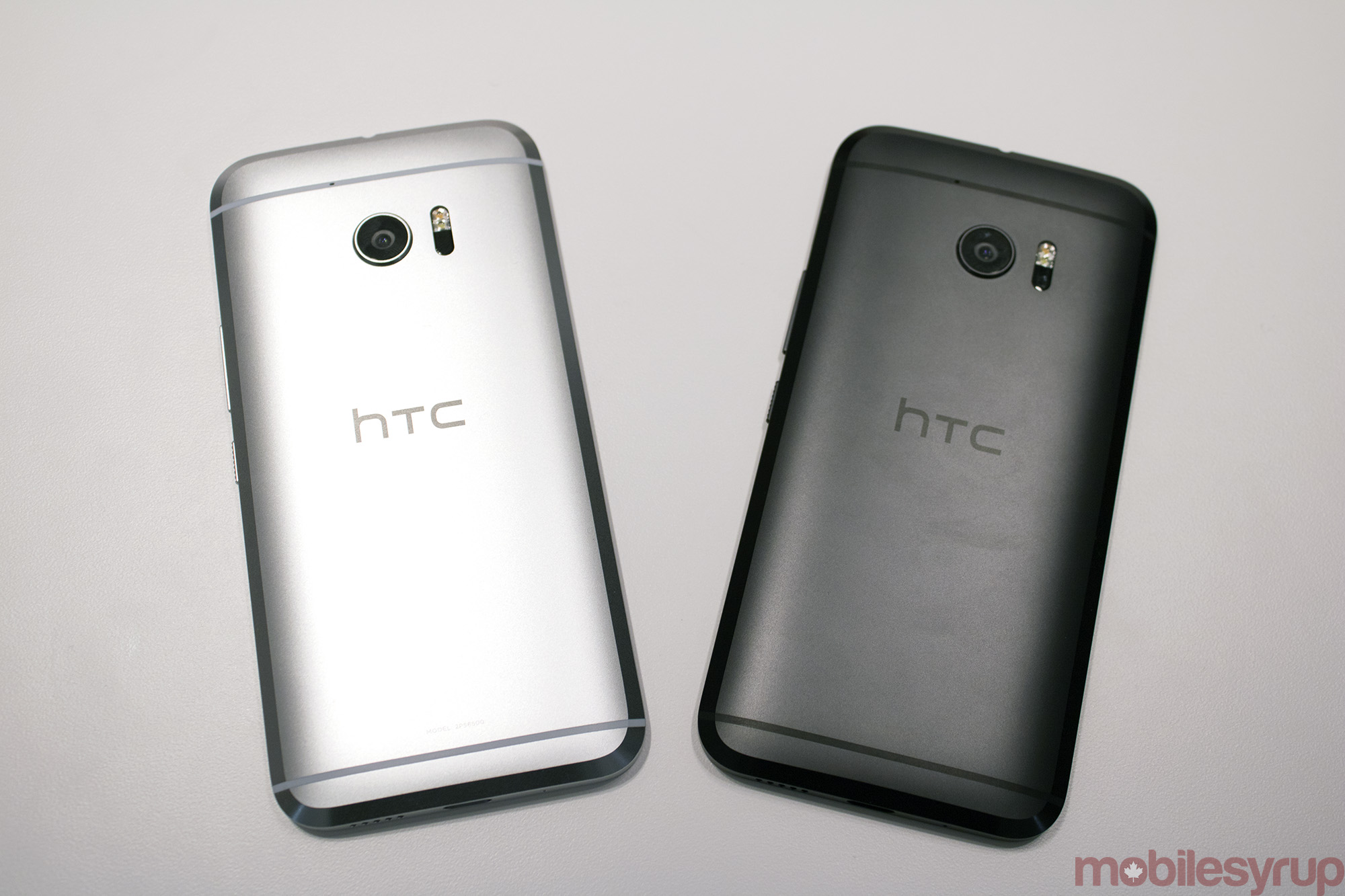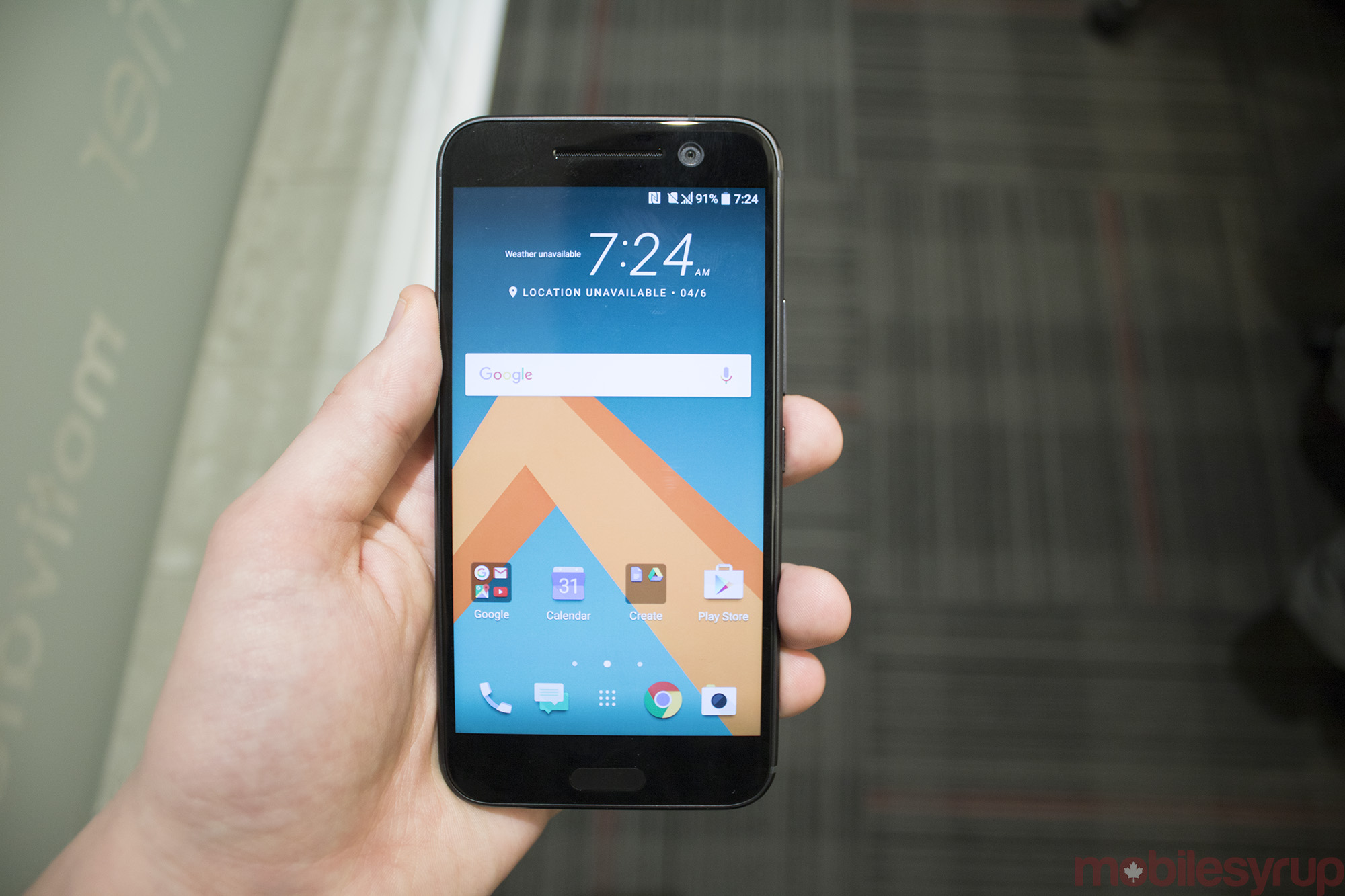
For HTC, the 10 is a return back to the basic concept of a smartphone.
It’s also a direct response to the heavy criticism the M9 received last year, likely encouraging the company to drop the M from its flagship line’s naming scheme, opting for a more eloquent and simple “10.” There’s no denying the release of the 10 has a lot riding on it with HTC struggling financially and Vive sales not predicted to skyrocket until virtual reality roots becomes more mainstream.
As far as HTC is concerned, the 10 must be both a critical and a financial success. So has the one-time smartphone manufacturing powerhouse nailed it with the 10? For the most part the answer to this question is yes.
HTC 10 Specs
- Android 6.0 Marshmallow with HTC Sense
- Qualcomm Snapdragon 820, 2.2Ghz Quad-core, 64-bit processor
- 5.2 inch, Quad HD (2560 x 1440 pixels, 564 ppi) Super LCD 5 with curved-edge Gorilla Glass
- 4GB RAM
- 32GB or 64GB internal storage, MicroSD expandable up to 2TB with Flex Storage
- 12MP HTC UltraPixel 2 (1.55µm pixel size, OIS, Dual tone LED flash, 4K video recording
- 5MP front-facing camera (1.34µm pixel size), OIS, Full HD 1080p video recording
- HTC BoomSound Hi-Fi Edition, Dolby Audio, Fingerprint sensor, Gyroscope, Proximity, Ambient Light
- Bluetooth 4.2
- 3000 mAh battery
- 145.9mm x 71.9mm x 3.0mm
- Colour options: Onyx (black) or Ceramic (limited edition)
- Weight: 161 grams
- Wi-Fi 802.11 a/b/g/n/ac (2.4 & 5GHz)
- LTE: B1,2,3,4,5,7,12,13,17,20,28,29. GSM: 850, 900, 1800, 1900 MHz
Just a phone
While the Taiwanese-based company has improved almost every aspect of the disappointing M9 and the marginally improved A9 with the release of the 10, including the M9’s abysmal camera, it’s still just another powerful, sleek looking smartphone in a 2016 market that’s now full of powerful, sleek-looking smartphones. Whether or not the 10 will appeal to you will likely depend on how you feel about this statement.
Samsung’s line of recent high-end handsets, most recently the S7, are compatible with the company’s Gear VR headset, and the edge features slopped sides and a non-existent bezel. LG’s G5, despite how underwhelming the smartphone and its “Friends” are, is compatible with a variety of different accessories, including the 360 Cam and Cam Plus, two interesting but ultimately disappointing peripherals.
The 10, unlike HTC’s major competitors, is gimmick free, which means it doesn’t stand out in the wash of solid high-end flagship smartphones released so far in 2016. So despite how solid the 10 really is, it unfortunately may not grab the attention of the average consumer.
Personally, I find this back to basics approach refreshing, especially given the fact that the G5’s promised modular fantasy hasn’t exactly panned out. Heavily touted smartphone features are often shallow gimmicks anyway, though I am a fan of Samsung’s S7 edge.
Sleek and slippery
But now that we’ve gotten that out of the way, let’s take a look at the actual phone. The back of the 10 features the same aluminum body HTC pioneered years ago, only now with tapered edges the company describes as “chamfered,” making the phone slightly easier to hold, though it still slid out of my hand a number of times, perhaps more so that the M9. This means you’ll probably want to put it in a case as soon as possible.
The notable BoomSound speakers that were once prominently located on the front of the 10 have also been shifted to its base, though one speaker remains at the top of the 10. While a positive aesthetic shift, this change has also resulted in a drop in sound quality when compared to the HTC M9. The 10’s audio, however, is on par with most other android devices out there. But this also means that HTC is no longer the clear leader in sound when it comes to smartphones.
The phone’s front is all glass, complete with a vibrant, crisp 5.2-inch quad HD 2560 x 1440 pixel LCD display (a first in terms of resolution for HTC), though I feel like the screen isn’t as vibrant as the S7’s OLED glass. This makes sense given the fact that LCD technology generally isn’t as bright as the more saturated pixels present in OLED screens.
The 10 also features an oval fingerprint sensor I found responsive most of the time, though in some instances it didn’t recognize my fingerprint. While I can’t be certain, I think this is likely due to the scanner’s strange shape, causing the tip of my finger to sometimes not cover its entire surface.
The 10 also features a pair of capacitive navigations buttons. Unfortunately, and I should mention the same thing happened to me with the S7, I often found myself accidentally pressing these buttons when clutching the phone or attempting to put it down on a table.
This is because the buttons are located very close to the edges of the 10. So depending on how I pick the smartphone up, or my specific grip on the phone, my palm often accidentally touches the buttons. While I experienced the same issues with the S7, I feel like the 10’s capacitive buttons are slightly more sensitive.
In terms of measurements, the HTC 10 is 9mm thick at its deepest point and weighs 161g, resulting in the phone being a little thicker and slightly heavier than most other flagship phones on the market, though most people probably won’t notice the additional size and weight (it is slightly heavier than the 157g One M9). To put these numbers in perspective the Nexus 5X and S7 are both 7.9mm thick and weigh 136g and 152g, respectively.
The only draw back in terms of design, beyond the finicky, easy to accidentally touch capacitive buttons, is the 10’s volume rocker tends to wobble slightly in the phone’s aluminum shell. Also, the volume rocker is located above the textured power button, an unusual design move for HTC and a switch from the One M9. Those switching from other devices like the 6P and 5X, or even an iOS smartphone will likely have trouble (like me) reworking their muscle memory when grasping for the 10’s volume button.
The only other notable issue worth mentioning is that the 10 runs rather hot, even when not performing CPU intensive tasks and especially while charging. It’s unclear if this is the fault of the Snapdragon 820, HTC’s hardware or my review unit, though the other review unit sent to us also runs warm.
Overall, however, the 10 feels like a premium smartphone that’s able to go head to head with other impressive flagships like Samsung’s S7, Google’s Nexus 6P and Apple’s 6s. It also looks considerably sleeker and more polished than LG’s disappointing G5.
Comparable powerhouse
Like almost every flagship released this year, the 10 is extremely fast thanks to its industry standard Snapdragon 820 processor and beefy 4GB of RAM, allowing for ample multitasking. During my time with the 10, I didn’t run into any slow down issues while browsing the web, playing graphically intense games like Alto’s Adventure, or when jumping between apps. This isn’t something I’ve been able to say about other flagships I’ve tested this year, apart from the S7 and S7 edge.
The phone’s substantial 3,000 mAh battery also ensures it manages to make it through through an entire day on one single charge with moderate use. In one instance, I actually forgot to charge the 10 and the battery marathoned it until noon the following day.
USB Type-C Quick Charge 3.0 support also means that the 10 can charge to 100% in about an hour or so, an added bonus for those looking to charge their devices quickly.
Bloatware be gone
But my favourite thing about the 10 is the lack of bloatware present in HTC’s unobtrusive Android skin. Instead of forcing pre-installed apps and its own take on Android to 10 owners, HTC has done the smart thing and opted to utilize Google’s suite of applications when it comes to photos, though Blinkfeed and Bell’s applications (if you purchase the version locked to Bell) still come pre-installed on the 10.
This also means that it’s very possible the 10 may get updated to the latest version of Android more quickly than other handsets. Of course this is speculation, but given the fact HTC would only need to update a couple of apps and a minimal skin, it’s very likely.
Of every flagship smartphone available right now that isn’t a Nexus device, the 10 offers one of the most stock Android experiences available.
The 10 also offers interesting “Freestyle Layouts” that completely alter the smartphone’s design, replacing traditional Android icons with artwork. For example, one theme called Pixel, gives the 10 a retro video game-infused pixelated revamp, and Graphite, turns your phone into a teenage hipster’s dream. While Freestyle Layouts may not appeal to my particular smartphones needs, they’re a fascinating diversion that has the potential to appeal to a younger demographic.
Camera comeback
By: Igor Bonifacic
From a hardware perspective, the 10 features the company’s most impressive camera package to date. Protruding from the back of the device is a f/1.8 lens with optical image stabilization (OIS), laser auto-focus and dual-tone flash. The 12-megapixel sensor behind this lens is notable for making use of the company’s Ultrapixel 2 technology. While mainly a marketing term used by HTC (and competitor Samsung) to describe larger camera sensor pixels, the 10 does have a more capable camera because of this feature.
The important takeaway here is that HTC’s latest smartphone features camera sensor pixels that are the same size as the ones found in the sensor used by the Nexus 6P, which is to say the two phones have the largest camera sensor pixels found on any smartphones currently on the market. The result is a phone that, while not as proficient in low-light shooting conditions as the Galaxy S7, will take great shots in almost every situation.
The camera on the front of the 10 is no less impressive. It’s a 5-megapixel, f/1.8 affair. It’s also the first front-facing camera on a smartphone to feature OIS.
Taken together, these two cameras allowed me to capture some of my favourite photos with a smartphone.
Colour reproduction, particularly outside, was delightful. Photos were sharp without being overly sharp. Moreover, with the help of the 10’s Snapdragon 820 processor, both cameras were fast to start. Switching between cameras and the phone’s video mode was also quick.
One issue I had with the camera, and it’s a pretty major one, was with its rear-facing camera’s laser auto-focus module. In my time with the HTC 10, it was incredibly finicky, often times taking several moments to zero in on a subject. In some situation, particular macro shots, it even ended up focusing on the wrong subject. This, more than anything else, marred an otherwise superlative camera experience.
From a software perspective, HTC’s completely reworked camera app is a huge improvement over the company’s previous effort. From a feature standpoint, the app has everything one would ever want in a camera app. It supports a manual mode, RAW image capture and even has a hyperlapse mode for capturing time-lapses (a notable inclusion because Instagram’s Hyperlapse app isn’t available on Android). It’s worth noting HTC has ditched its own gallery app for Google Photos. Whether this is a good move will depend on your opinion of Google Photos.
Like I said above, the main issue with the app and indeed the camera itself, comes back to auto-focus performance. The app compounds the auto-focus issue by constantly telling the user to adjust their grip on the phone to avoid obstructing the autofocus laser.
It’s possible to take great photos with the HTC 10, it’s just sometimes a task to get there. The good news is that the auto-focus issue seems to be software-related, which means the issue could get sorted out in the near future.
Top tier smartphone
While I found HTC’s back to basics approach with the 10 compelling and refreshing – for me it hits every mark – some might be disappointed by its lack of a notable wow factor.
One major drawback is the HTC 10’s current price tag in Canada, coming in at $350 on a 2-year contract (the S7 only costs $299) with Bell and $899 off-contract, though I expect the 10’s exclusivity with Bell to be short lived.
For better or worse, the 10 is just a smartphone, although it is a great one.
Pros
- Impressive design
- significant camera improvement
- Lack of bloatware (HTC’s latest skin is almost stock Android)
Cons
- Expensive price tag
- Camera suffers from intermittent technical issues
- Sound isn’t as good at the M9
MobileSyrup may earn a commission from purchases made via our links, which helps fund the journalism we provide free on our website. These links do not influence our editorial content. Support us here.

